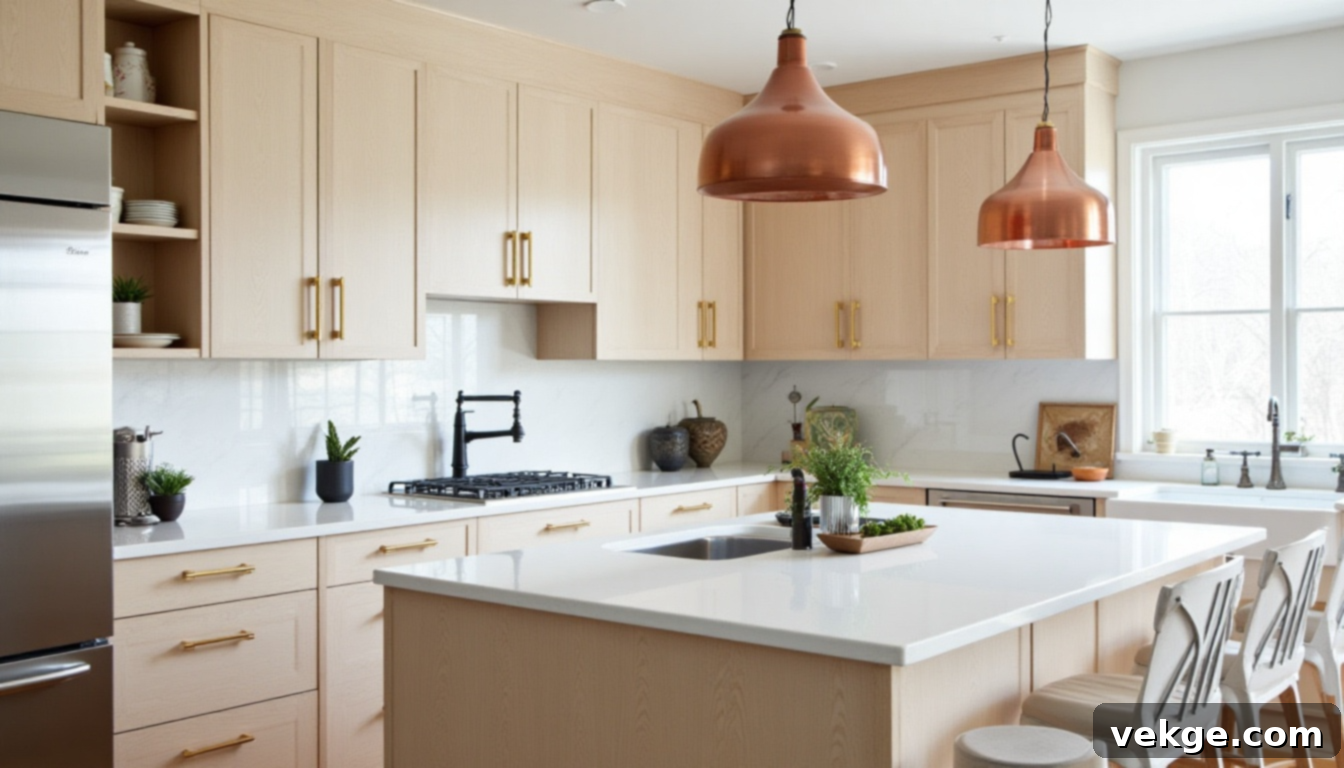Mastering the Art of Mixing Metals in Your Kitchen: A Comprehensive Style Guide
Are you dreaming of a kitchen update that feels fresh, modern, and uniquely yours, but without the hassle and expense of a full renovation? You’re in the right place! One of the most impactful yet surprisingly simple ways to elevate your kitchen’s aesthetic is by expertly mixing metal finishes. This design technique adds depth, personality, and a custom feel that makes your space look as if it evolved beautifully over time, rather than being pulled straight from a catalog.
Perhaps you’ve found yourself wondering how to flawlessly combine different finishes like warm brass, sleek chrome, or bold matte black without creating a chaotic or clashing look. Many homeowners face this very dilemma, and the good news is, it’s far easier to achieve a harmonious blend than you might imagine. This comprehensive guide is designed to demystify the process, offering you clear, actionable steps to confidently mix metals in your kitchen design.
Throughout this article, you’ll discover fundamental pairing rules, learn where each metal finish shines brightest, and gain invaluable tips for seamlessly integrating them with your kitchen’s existing style and color palette. We’ll also highlight common pitfalls to avoid, ensuring every metal choice feels intentional, sophisticated, and perfectly balanced. Get ready to transform your kitchen into a stylish sanctuary that truly reflects your taste!
Why Mixing Metals in the Kitchen Is a Game-Changer
If your kitchen currently feels a bit too uniform, flat, or lacking that “wow” factor, incorporating multiple metal finishes can be the simple yet transformative solution you’ve been seeking. This strategic design choice offers a multitude of benefits:
- Adds Visual Interest & Depth: A single metal finish, while clean, can sometimes feel monotonous. Introducing a second or third metal instantly breaks up the visual monotony, adding layers of texture and reflection that create a more dynamic and engaging space.
- Achieves a Lived-In, Custom Look: When metals are thoughtfully mixed, your kitchen takes on a curated appearance, suggesting a space that has been carefully decorated and personalized over time. It moves away from a generic, builder-grade feel towards something truly bespoke.
- Highlights Architectural Details: By using contrasting metals, you can draw attention to specific features you love, whether it’s elegant cabinet hardware, a striking faucet, or unique lighting fixtures. Each piece gets a chance to shine.
- Offers Practicality & Flexibility: Design trends evolve, and product lines can be discontinued. Mixing metals frees you from being locked into a single finish, making future updates or replacements much simpler. If a specific finish becomes hard to find, you can introduce another complementary metal without disrupting your overall design.
- Complements Existing Finishes: Many kitchens already have stainless steel appliances. Instead of feeling limited by this, you can leverage it as a neutral base and introduce warmer or bolder finishes like brass or matte black in your hardware and lighting to create stunning contrast.
Expert Tips for Mixing Metals in Kitchen Design
While mixing metals offers immense creative freedom, a few guiding principles can help you achieve a balanced, cohesive, and sophisticated look rather than a cluttered or disjointed space. Follow these tried-and-true tips for success:
1. Limit Your Palette to 2–3 Metals
The golden rule for successful metal mixing is restraint. Stick to no more than two or three distinct metal finishes within your kitchen. This provides enough variation to create interest and depth without overwhelming the eye. Too many different metals can lead to a chaotic and unharmonious appearance, making your kitchen feel random and unplanned.
With a limited palette, each chosen finish has space to breathe and stand out, enhancing its unique qualities without competing for attention. This focused approach also simplifies the design process, making it easier to coordinate your metal selections with your existing cabinets, countertops, and backsplash materials.
2. Establish a Dominant “Main” Metal
To ground your design and create a sense of cohesion, designate one metal as your “main” finish. This primary metal should account for approximately 60%-70% of all the metal elements in the room. Think of it as the anchor that sets the overall tone for your kitchen’s metallic story.
Typically, larger elements like your appliances (often stainless steel), extensive cabinet pulls, or a primary faucet are excellent candidates for your main metal. The remaining 30%-40% can then be allocated to one or two accent metals, which will appear in smaller, more strategic doses, such as pendant lights, smaller hardware pieces, or decorative accents. This ensures the main finish consistently establishes the foundation, while accent metals add intriguing visual layers.
3. Focus on Contrast and Complement, Not Clashing
The goal of mixing metals is to create a dynamic interplay, not a visual battle. Choose metals that offer a pleasing contrast but still feel inherently right together. For instance, the warm, reflective glow of brass paired with the stark, sophisticated edge of matte black creates a bold yet elegant contrast that enhances both finishes without any sense of discord. Similarly, a brushed nickel can beautifully complement a polished chrome.
Before committing, consider how your chosen metals interact with each other and with your kitchen’s overall style and mood. Do they enhance each other’s characteristics, or do they pull attention in opposing, uncomfortable directions? If two finishes seem to “argue” or create an unpleasant visual tension, they might not be the best pairing for your space.
4. Mix Finish Types Within the Same Metal Family
Beyond mixing different types of metals, you can also add another layer of sophistication by mixing various finish types within the same metal family. For example, a polished chrome faucet can beautifully coexist with brushed nickel cabinet hardware. The key is that while the underlying metal might be different, the varied textures add depth and interest.
Flat or matte finishes often lend a more contemporary or industrial feel, while polished and shiny finishes evoke a sense of traditional elegance or glamour. Consider both aesthetics and practicality; some finishes, like brushed or satin, are more forgiving with fingerprints than highly polished ones. If you’re mixing metals of distinctly different colors (e.g., brass and chrome), employing consistent finish types (e.g., both brushed or both polished) can actually help them look more cohesive and intentional.
5. Balance Warm and Cool Tones
Metals can generally be categorized as “warm” or “cool.” Warm metals include brass, copper, and gold, radiating an inviting glow. Cool metals, such as silver, chrome, and stainless steel, offer a crisp, modern sensibility. Successfully mixing these different temperature groups requires thoughtful consideration.
It is absolutely permissible to mix warm and cool metals, but it’s crucial to do so with care to maintain balance. Consider your kitchen’s existing color scheme – your wall paint, cabinet finishes, and countertop materials – to see which combination feels most harmonious. A general rule is to pick one dominant temperature and use the other as an accent. Black is an exceptionally versatile “neutral” in this context. Its strong, grounding presence complements both warm and cool metals beautifully, acting as a bridge to tie diverse finishes together.
Inspiring Pairings for Mixing Metals in Kitchen Decor
These proven metal pairings are celebrated for their ability to introduce balance, texture, and distinct personality into any kitchen. They add visual depth and sophistication without the risk of clashing, empowering you to mix finishes in a way that feels intentional, stylish, and effortlessly elegant.
Brass and Black
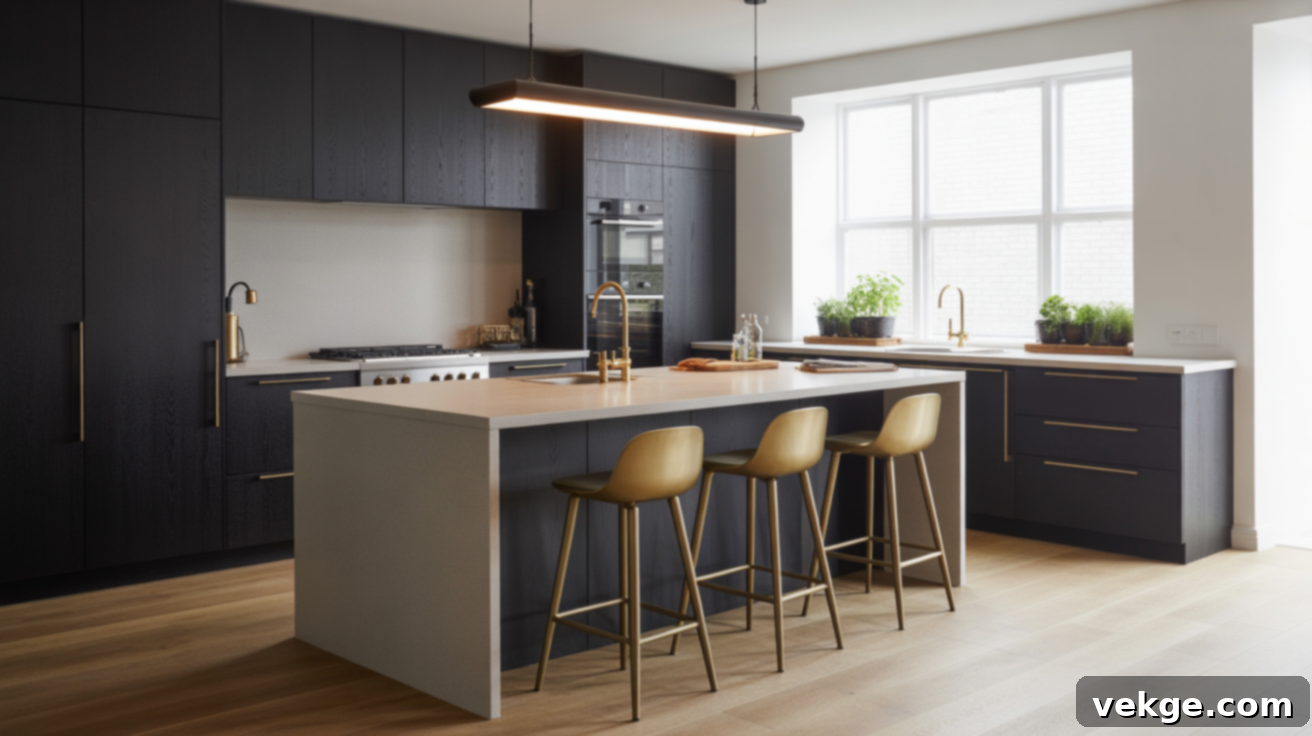
This dynamic duo is a perennial favorite for a reason. Brass brings a luxurious, antique-inspired warmth and subtle shimmer, while matte black introduces a bold, modern contrast and a grounding presence. Together, they forge a rich, stylish look that feels both contemporary and inviting, without being overly flashy or ostentatious. This pairing works beautifully in a variety of styles, from modern farmhouse to industrial chic.
For a balanced effect, consider using black for larger, more substantial pieces, such as cabinet hardware, appliance handles, or a striking range hood. Then, introduce strategic touches of brass through elements like elegant pendant lights above an island, delicate cabinet knobs, or a statement faucet. This distribution ensures the space feels sophisticated and eye-catching, allowing each metal to highlight the other.
Chrome and Nickel
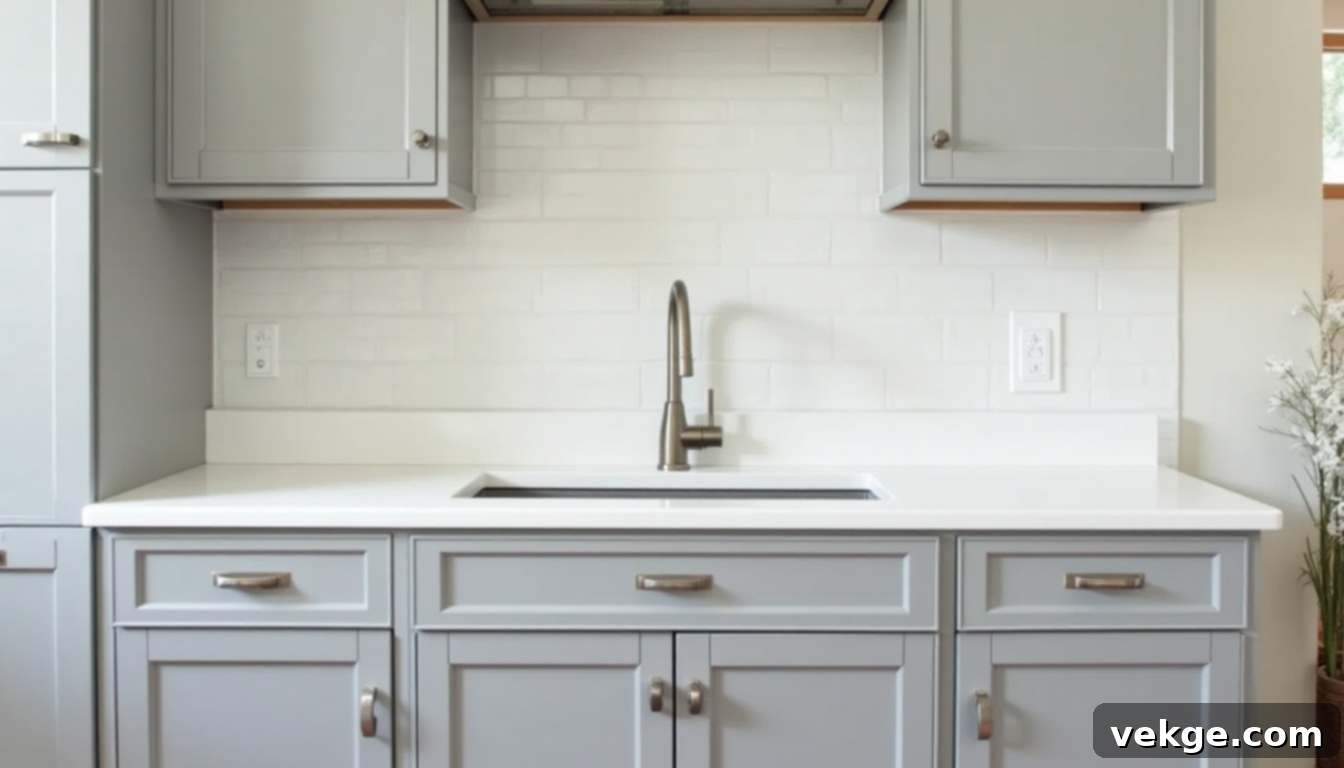
Chrome and nickel are both cool-toned metals, making them natural companions in kitchen design. Their subtle differences create a nuanced, sophisticated layering effect. Chrome is known for its highly reflective, mirror-like sheen, bringing a bright, crisp modern touch that bounces light around the room. Nickel, whether polished, satin, or brushed, offers a slightly warmer, softer, and more subdued appearance with a deeper luster.
These two finishes pair flawlessly, particularly in kitchens with cool color palettes, such as white, gray, or soft blue schemes. To maintain a soft and balanced aesthetic, you might use the brighter chrome for frequently used fixtures like faucets, or for statement lighting fixtures. Then, integrate nickel for cabinet pulls, drawer slides, or appliance hardware, where its more muted glow can provide a subtle yet refined contrast. This combination creates an elegant and timeless look.
Black and Gold

The pairing of black and gold exudes dramatic elegance and undeniable glamour. Black, whether matte or polished, provides a strong, anchoring foundation that signifies sophistication and modernity. Gold, in its various forms from bright polished to softer satin, brings a luxurious brightness, warmth, and a touch of opulence. Together, they create a bold and stylish combination that adds significant depth and a radiant glow to your kitchen.
To implement this striking duo, consider using black for larger features such as cabinet doors, appliance panels, or a kitchen island base to establish a powerful backdrop. Then, introduce gold in smaller, carefully placed accents. Think elegant drawer pulls, a gracefully arching faucet, or exquisite lighting fixtures that shimmer and catch the light. This strategic distribution allows the gold to stand out as a precious highlight without overwhelming the space, ensuring a balance of drama and refined taste.
Oil-Rubbed Bronze and Brass
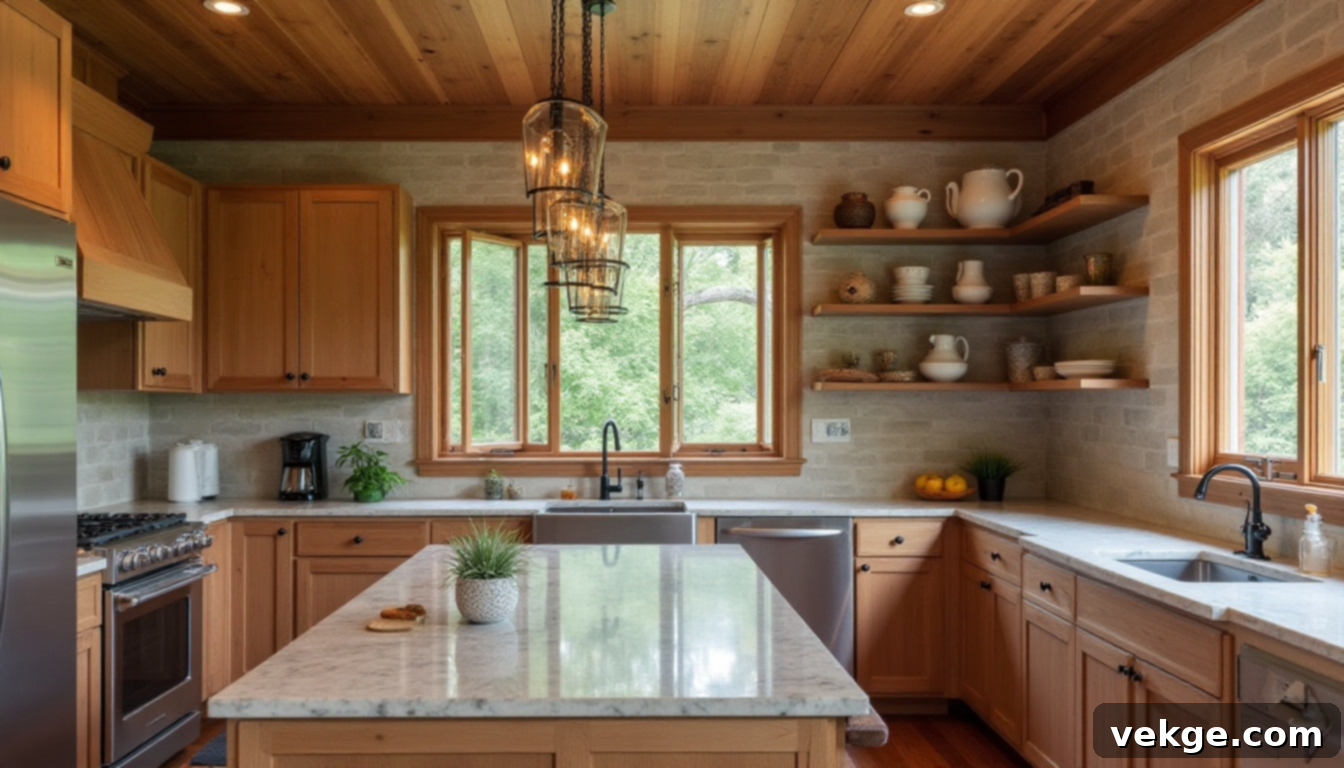
For kitchens seeking a sense of history, warmth, and classic charm, the combination of oil-rubbed bronze and brass is a perfect choice. Both are inherently warm metals, and their interplay creates a rich, inviting, and somewhat rustic or traditional aesthetic. Oil-rubbed bronze offers a deep, aged, and often slightly textured appearance, reminiscent of antique pieces that have developed a beautiful patina over time. Brass, particularly in an antique or unlacquered finish, complements this with a softer, more polished, and luminous glow.
This pairing is particularly stunning when integrated with natural elements like rich wood cabinets, exposed brick, or natural stone countertops. To achieve balance, use the deeper, more impactful oil-rubbed bronze for bold features such as a grand range hood, larger light fixtures, or a farmhouse sink. Then, introduce the more reflective brass for gentle highlights, like cabinet handles, pulls, or smaller decorative elements, allowing it to bring a touch of refined sparkle to the warm, earthy palette.
Strategic Placement: Where to Use Mixed Metals in Your Kitchen
Understanding where to strategically place different metal finishes is key to achieving a cohesive and visually appealing kitchen. Each area offers a unique opportunity to introduce a metallic accent or establish a dominant finish.
1. Cabinet Handles and Pulls

Cabinet hardware is often the most impactful place to feature your main metal. Due to their prevalence across your kitchen cabinetry, using a consistent finish here helps to ground the entire space, creating a sense of order and visual steadiness. However, this doesn’t mean you can’t introduce subtle variations!
You can still inject personality by mixing different types of hardware within the same finish – perhaps using elegant knobs on upper cabinets and more substantial pulls on lower drawers and pantry doors. This is an excellent starting point for those new to mixing metals, as it allows for a strong primary statement while leaving room for accent metals in other areas.
2. Faucets and Sinks
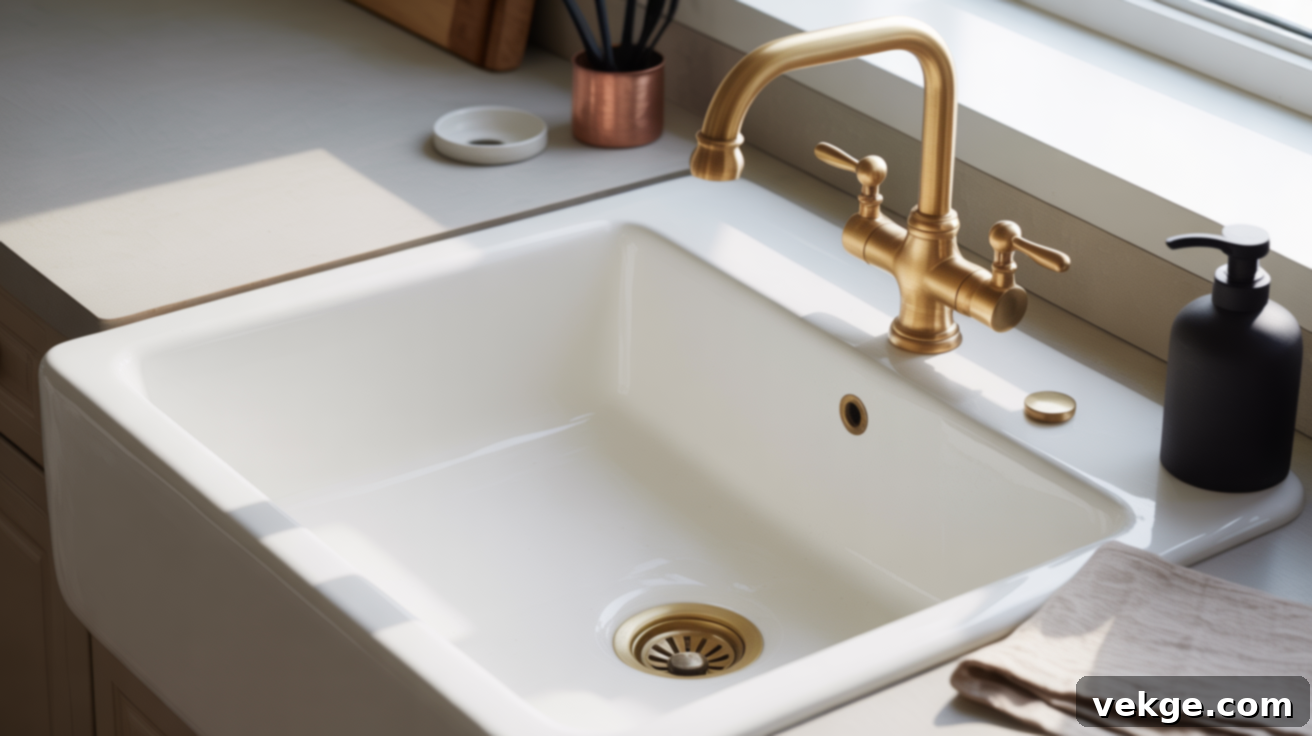
The kitchen faucet presents a fantastic opportunity to showcase a secondary or accent metal. A striking brass faucet, for example, can become a stunning focal point against a pristine white or dark colored sink, providing an elegant pop of warmth or contrast. Modern sinks are also available in a wide array of metal finishes, including copper, matte black, or even gunmetal.
When selecting your faucet and sink, consider how their finishes will interact with each other and with your cabinet hardware. A cohesive look often involves complementing tones, such as a cool-toned stainless steel sink paired with a sleek chrome faucet, or a warm copper sink with an oil-rubbed bronze fixture. Ensure your choices contribute to the overall balance and aesthetic you’re aiming for.
3. Lighting Fixtures
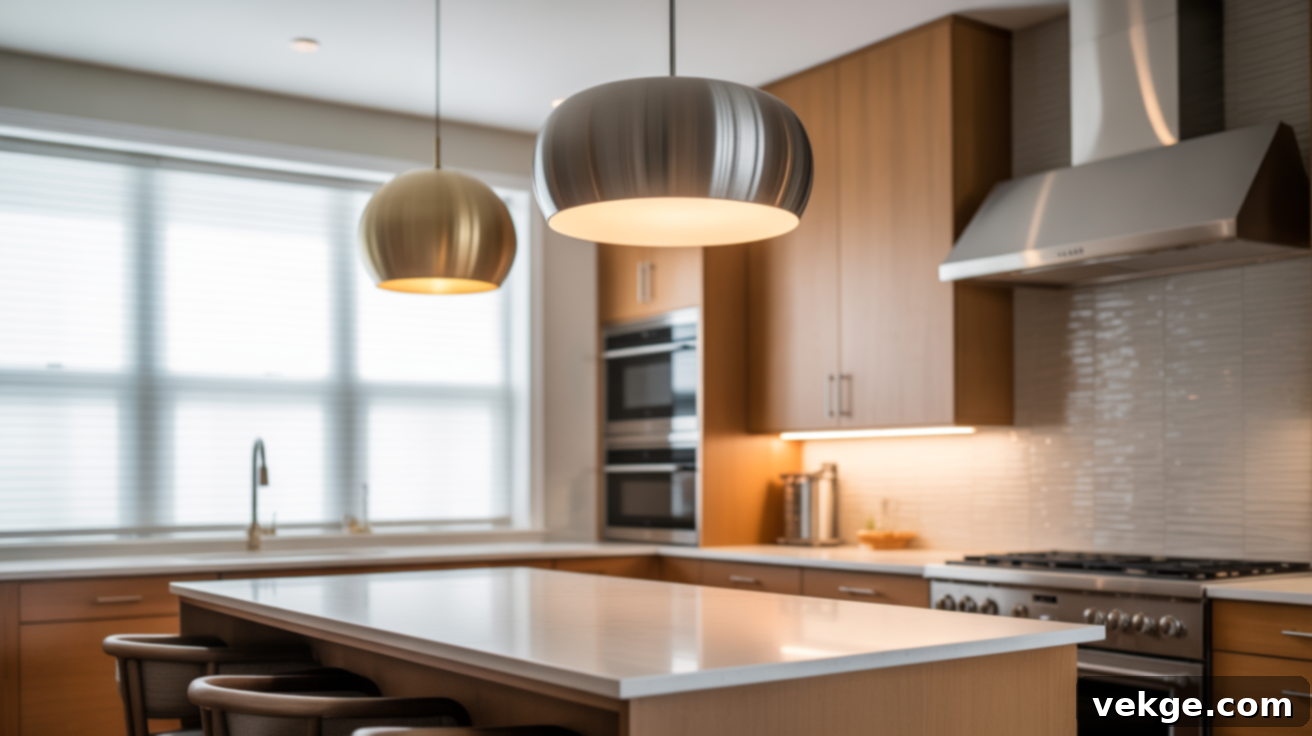
Pendant lights, chandeliers, and other hanging fixtures are ideal for introducing bolder metal finishes or for reinforcing your accent metal. Lighting naturally draws the eye upwards, allowing a distinctive metal finish to make a significant statement without overwhelming other areas of the kitchen. If your light fixture is large or has an intricate design, a lighter, more reflective finish might help it feel less heavy and more ethereal.
Conversely, for smaller or more minimalist fixtures, a darker or more dramatic metal can add a powerful punch. Beyond aesthetics, lighting fixtures play a crucial role in bringing metallic elements to different heights within the room, ensuring that metal accents are distributed vertically, which significantly enhances visual interest and balance throughout the space.
4. Appliances
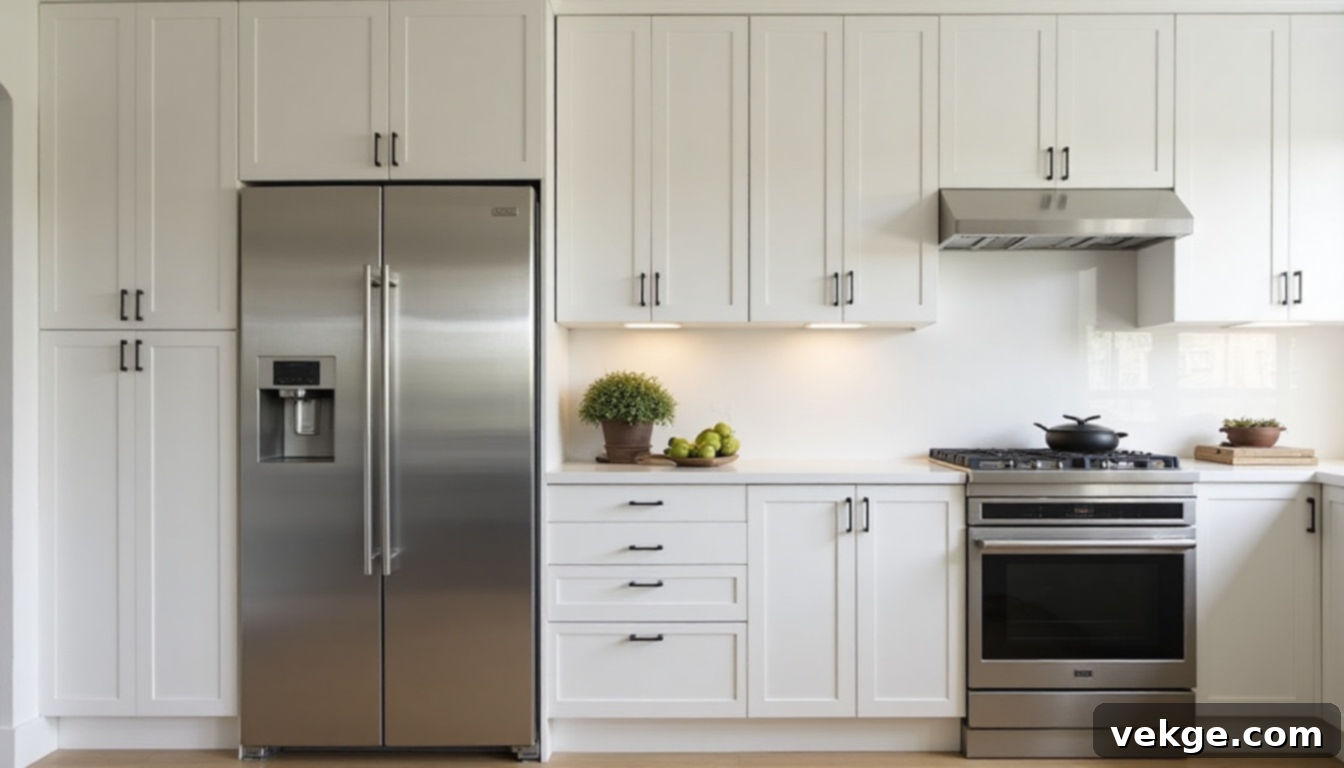
Your major kitchen appliances are typically the largest metallic components in the room, making them a natural candidate for your main metal. Stainless steel remains the most popular choice due to its timeless appeal, durability, and neutral cool tone. If you opt for stainless steel appliances, you have immense flexibility to introduce contrasting or complementary finishes like black, brass, or copper in smaller touches through hardware and lighting.
The key here is consistency: aim to keep all your large appliances in the same finish. This creates a cohesive and integrated look for these significant investments. Mixing appliance finishes (e.g., a black refrigerator with a stainless steel oven) can quickly make the space feel disjointed and unplanned. Let your appliances set a foundational tone, and then layer other metals around them.
5. Range Hoods and Backsplashes

A metal range hood can serve as a stunning architectural focal point, instantly drawing attention and adding a touch of grandeur to your kitchen. Choosing a metal finish for your hood that contrasts beautifully with your surrounding cabinetry or backsplash can truly make it pop. Imagine a hammered copper hood against light-colored cabinets, or a sleek matte black hood in a white kitchen – these create undeniable visual impact.
The backsplash also offers subtle opportunities for metallic accents. This could include tiles with metallic glazes, decorative metal trim pieces, or even a full metallic tile backsplash for a bold statement. When incorporating metal into your hood or backsplash, ensure these elements are in sync with your cabinet hardware or lighting fixtures. This thoughtful coordination helps to tie the entire room together, creating a sophisticated and harmonious design narrative.
Best Metal Matches for Different Kitchen Styles
The existing style of your kitchen often provides valuable clues for which metal combinations will work best. By aligning your metal choices with your kitchen’s inherent aesthetic, you can effortlessly enhance its overall look while infusing your own personal touch. It’s about respecting your kitchen’s foundational feel while incorporating details that truly reflect your individual style.
| Kitchen Style | Recommended Metals & Pairings |
|---|---|
| Modern | Chrome, matte black, brushed stainless steel. Combine chrome with matte black for sleek contrast, or use brushed stainless steel with touches of polished brass for warmth. |
| Farmhouse | Oil-rubbed bronze, copper, antique brass. A rustic mix of oil-rubbed bronze for hardware and copper accents for sinks or lighting creates authentic charm. |
| Industrial | Raw steel, aluminum, pewter, copper. Embrace the rugged look with raw steel shelving and complement with copper pendant lights or pewter hardware. |
| Transitional | Brass + nickel, brushed finishes. Pair the timeless elegance of brushed nickel with the subtle warmth of satin brass for a sophisticated, balanced aesthetic. |
| Boho | Mixed global metals, hammered textures, antique gold, natural brass. Think eclectic pairings like hammered copper with antique gold accents, reflecting a well-traveled, layered look. |
| Traditional | Polished brass, oil-rubbed bronze, polished nickel. Classic combinations like polished brass with oil-rubbed bronze hardware lend an enduring, stately feel. |
| Coastal/Nautical | Brushed nickel, chrome, polished chrome. Crisp cool tones work best; consider brushed nickel hardware with chrome lighting for a fresh, airy feel. |
Budget-Friendly & DIY Tips for Mixing Metals
Achieving a stylish mixed-metal look doesn’t require a complete kitchen overhaul or expensive new fixtures. With a few smart and affordable strategies, you can effortlessly introduce diverse metallic finishes into your kitchen without breaking the bank:
- Strategic Swaps: Start small by replacing just a few cabinet knobs or drawer pulls with a different finish. This low-commitment approach allows you to test out a new metal and see how it harmonizes with your existing elements before investing in more pieces. Even a single drawer front updated with a new metal can create a surprising visual impact.
- High-Quality Spray Paint: For outdated fixtures or hardware that are otherwise in good condition, a high-quality metallic spray paint can work wonders. Brands offering finishes like “rubbed bronze,” “satin brass,” or “matte black” can completely transform the look of existing pieces at a fraction of the cost of buying new ones. Proper preparation (cleaning and light sanding) is key for a durable finish.
- Layer with Accessories: Introduce new metal finishes through easily changeable accessories. Think about stylish utensil holders, decorative trays, statement fruit bowls, hanging pot racks, or even small decorative hooks. These subtle accents provide opportunities to layer different metals, adding contrast and personality without permanent changes.
- Thrift Store Finds: Embark on a treasure hunt at local antique shops, flea markets, or second-hand stores. You might discover unique light fixtures, vintage faucets (check for functionality!), or decorative items in alternative finishes that can add character and a curated, mixed-metal feel to your kitchen on a budget. Don’t be afraid to give them a little DIY polish or paint if needed!
Remember, even the smallest, most intentional updates can profoundly shift the entire ambiance of your space. Begin with what you currently have and gradually build up your mixed-metal scheme. Thoughtful, layered changes truly make all the difference in achieving a personalized and sophisticated kitchen.
Conclusion
As we’ve explored, mixing metals in the kitchen is a remarkably effective and accessible way to infuse style, depth, and personality into your home without the need for a costly and disruptive full-scale renovation. If your goal is a quick yet impactful update, embracing a multi-metal approach is a design strategy that truly delivers.
Now equipped with insights into the best pairings, strategic placement tips, and common pitfalls to sidestep, you possess the knowledge to confidently plan a kitchen aesthetic that feels both fresh and beautifully balanced. From the foundational decision of your main metal to the delicate touches of accent finishes, every choice can contribute to a cohesive and inviting space.
Don’t be afraid to start small. Perhaps swap out a few cabinet handles, or update a single light fixture above your sink or island. These minor adjustments can often make a more significant difference than you might anticipate, as I discovered in my own kitchen. The key is to keep it simple, allowing each chosen finish to stand out and contribute to the overall narrative of your design. Let your kitchen reflect your unique style with confidence and flair!
Eager for more inspiring ideas and practical solutions to enhance your kitchen? Be sure to explore our other blog posts for a wealth of tips that cater to every style, preference, and budget.
Frequently Asked Questions About Mixing Kitchen Metals
Should kitchen faucets match cabinet hardware?
Not necessarily. While a perfectly matched look creates a cohesive and traditional aesthetic, intentionally mixing different finishes for your faucet and cabinet hardware can add significant depth, visual interest, and a more custom, layered feel to your kitchen. The crucial element is to ensure the chosen finishes complement each other in tone (warm vs. cool) and overall style, rather than clashing. For example, pairing a sleek matte black faucet with brushed brass hardware creates a modern and sophisticated contrast.
Can you mix stainless steel appliances with gold hardware?
Absolutely, and it’s a highly popular and stylish combination! Stainless steel appliances, being a cool-toned neutral, provide an excellent base for introducing the warm, luxurious glow of gold (or brass) hardware. To make this pairing successful, ensure you balance the warm and cool tones throughout the space. Incorporating a neutral finish like matte black in other elements (perhaps lighting or a few decorative items) can act as a bridge, tying the two distinct metal temperatures together seamlessly and enhancing the overall design harmony.
What metal finishes are considered classic in kitchen design?
Several metal finishes have stood the test of time and are widely considered classic choices in kitchen design due to their versatility and enduring appeal. These include:
- Brushed Nickel: A soft, muted silver tone that is incredibly versatile and hides fingerprints well.
- Matte Black: A bold, modern, and sophisticated neutral that pairs well with virtually any other color or metal.
- Stainless Steel: Predominantly seen in appliances, it’s a durable, clean, and cool-toned classic that serves as an excellent neutral base.
These classic finishes work beautifully across various kitchen styles and serve as excellent foundations that can be easily mixed with more on-trend finishes like polished brass, copper, or oil-rubbed bronze to create a personalized and updated look.
